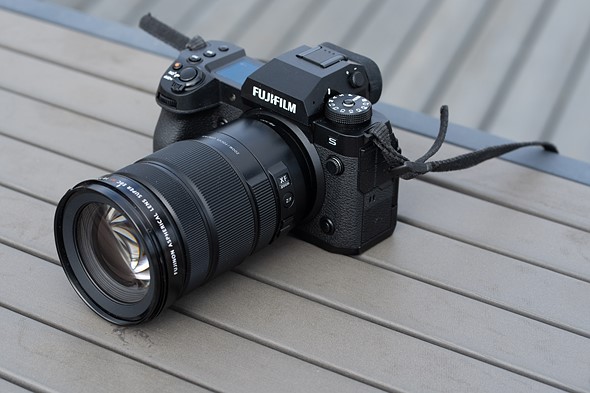Mirrorless cameras have replaced digital single-lens reflex cameras (DLSRs) as the industry standard. With cutting-edge sensors for both stills and video, every major manufacturer, from Canon and Nikon to Sony, has leapt into the mirrorless market. The finest mirrorless cameras will improve the quality of your pictures and open up new possibilities whether you’re a professional or an amateur.
Mirrorless cameras are distinct from standard SLRs, including DSLRs, in that they do not include a reflex mirror. A mirrorless camera exposes the sensor directly through the lens as opposed to projecting light onto it via this mirror. Know Here Some of The Best Projectors to have a Feel Like Theatre at your Home, Read Pros and Cons Before Make a Purchase.
Mirrorless cameras, which do not include a reflex mirror, are frequently smaller and lighter than DSLRs, making them more convenient to operate and carry. Although the mirrorless camera market is still fairly new, it is growing quickly. The most important thing when you weigh your selections is to choose the camera that best suits your requirements.
Panasonic X-H2S
Fantastic mirrorless camera, the Fujifilm X-H2S captures some of the greatest still images and movies available in any format. It delivers outstanding 40 fps continuous photography with complete autofocus and twice the processing capability of its predecessor. The camera has a 26MP APS-C X-Trans 5 stacked sensor from Fujifilm, along with 425-point hybrid autofocus and AI subject identification. In-body image stabilisation is enhanced by 7 stops, and you can monitor additional subjects, such as people, cars, trains, and animals.
Moreover, the Fujifilm X-H2S can capture 10-bit video at 6.2K 30p and super-fast 4K 120p. (In order to record swiftly moving objects in slow motion.) Three Apple ProRes codecs are supported by the camera, which might make it easier for users to edit and capture video on Apple equipment. This is the most potent APS-C camera you can get, boasting amazing colour science and the capacity to capture stunning photographs.
Pros
- IBIS 7-stop
- 6.2.K video at a maximum frame rate
- 40 frames per second continuous shooting
Cons
- a little expensive
Sony a1
The Sony a1 is a flagship camera that performs superbly in all areas, including video quality, speed, and resolution. It has few rivals as you move down the list of features. It has a full-frame 50MP sensor, which offers outstanding picture detail and dynamic range.
Moreover, its quick focusing technology can follow moving targets with ease. The Sony a1 is a fantastic option for shooting sports and wildlife because of these qualities. This is the ideal tool when paired with the proper mirrorless lens.
The Sony a1 has complete autofocus and auto exposure features and can shoot up to 30 frames per second at full definition. Videographers have a lot of creative freedom thanks to the camera’s ability to record both 4K and 8K videos at high frame rates. The Sony a1’s sole drawback is that it is by far the most costly choice on our list. But, when you realise that Sony’s camera combines outstanding speed, image quality, and video capabilities in one package, the price seems justifiable. 5 Best T-Mobiles Phones Available in Market 2023.
Pros
- 5-axis IBIS with stacked full-frame 50MP sensors
- incredible tracking and autofocus
Cons
- a little expensive
Panasonic X-S10
For those looking for a professional camera without breaking the bank, the Fujifilm X-S10 is an excellent choice. It appeals to both experts and novices because to its exceptional image quality, focusing performance, and 5-axis in-body image stabilisation. The Fujifilm X-S10 is a great choice for hybrid makers since it has stabilisation, which is useful for both photos and movies. Vloggers will value the camera’s articulating display, which is also included.
With a 26MP CMOS sensor, this mirrorless camera offers some of the best image quality available. not to mention having access to a huge selection of top-notch camera lenses. Strong video features of the Fujifilm X-S10 include crisp 4K capture, a headphone jack, and the ability to use an external microphone.
Check out the Fujifilm X-T4 or X-T5 if you like a more analogue feel. For shutter speed, ISO, and exposure correction, they provide external dials.
Pros
- 5-axis IBIS with fantastic image quality
- outstanding autofocus
Cons
- Battery life is average.
a7 IV Sony
The Sony a7 IV offers the most advanced mirrorless camera technology from Sony in a form factor that is affordable for both professionals and enthusiasts. The camera has a 33MP sensor with the ability to capture amazing still images and movies, as well as 759 autofocus points for superior autofocus performance. While capturing portraits, it also includes an eye-tracking function that will guarantee you always obtain clear, crisp photographs (or pictures of animals). By utilising a CFexpress Type A card, you receive up to 10 frames per second and the buffer supports up to 828 consecutive uncompressed RAW and JPEG images.
Artists can shoot detailed images and video with a single camera thanks to the a7 IV’s ability to record 10-bit video at 4K 60p. The Sony Bionz XR engine, which is strong enough to handle high-speed image processing, is responsible for the enhanced performance. Moreover, the Bionz XR enhances video quality by minimising motion blur and other blurring, even in low light. With the a7 IV, Sony shows that it is still a leader in the mirrorless format, which it helped to develop.
Pros
- At 4K 60p, 10-bit video
- amazing performance by the AF
- Tracks objects at up to 10 frames per second.
Cons
- back display with a lower resolution
EOS R6 Mark II Canon
The Canon EOS R6 Mark II is a worthy upgrade to its predecessor and the company’s most sophisticated full-frame mirrorless camera. The camera has best-in-class focusing and image quality thanks to a 24.2MP CMOS sensor and upgraded Digic X CPU. Users can concentrate without difficulty because to the 1,053 customizable focusing points that span 100% of the frame.
The Canon EOS R6 Mark II can capture up to 12 frames per second (fps) for up to 110 RAW frames and 1,000 JPEG frames. If you utilise the electronic shutter, you may increase this to 40fps. Additionally, the camera can record 10-bit video at 4K 60p or Full HD 120p.
The image sensor is supported by a five-axis stabilisation mechanism in the interim. Anybody who intends to take action photos with the Canon EOS R6 Mark II would appreciate this. Look no further if you’re looking for a robust full-frame mirrorless camera that can record stunning stills and videos.
Pros
- up to 40 frames per second
- 5-axis IBIS with extensive autofocus coverage
Cons
- might be challenging to locate
Read More: Best Pods and Single Serve Coffee Machines in 2023, Know Here.











